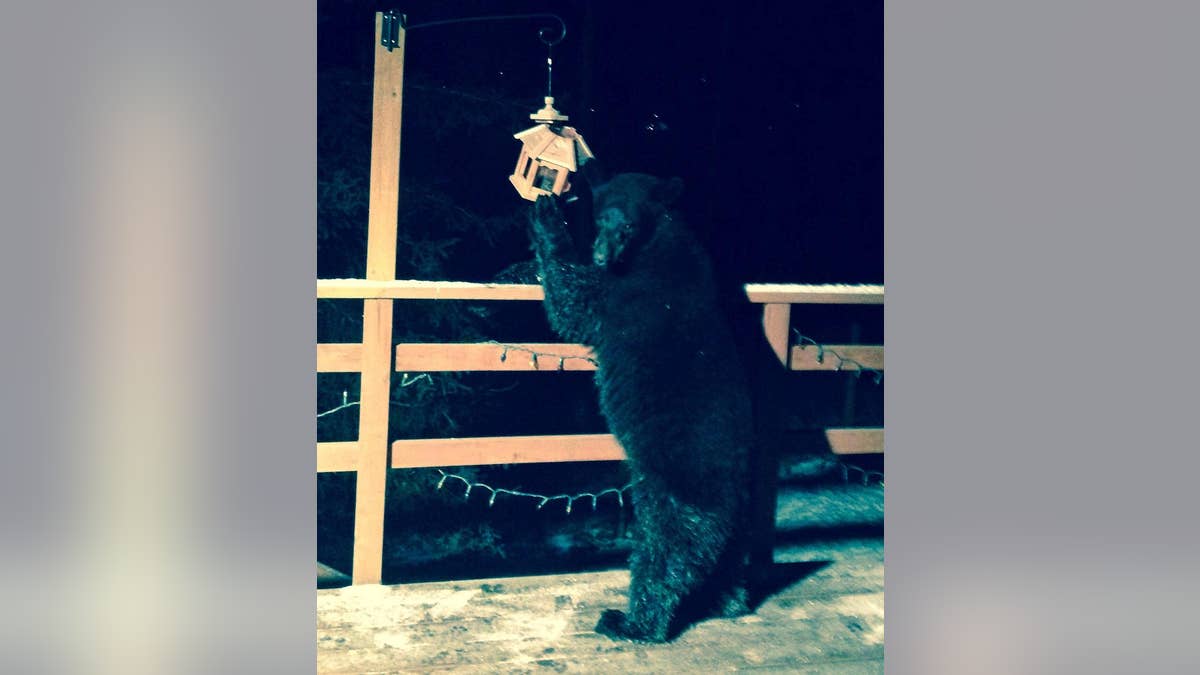
In this Nov. 7, 2014 photo provided by Bruce Batten, a black bear eats seeds inside a bird feeder on a second-floor porch after walking up a flight of stairs in Eagle River, Alaska. The incident and others prompted the Alaska Department of Fish and Game to warn residents that southcentral Alaska bears have not taken to winter dens and may be attracted to birdfeeders and cans of trash. Mild temperatures and little snow have led to bears hanging around. (AP Photo/Bruce Batten) (The Associated Press)
ANCHORAGE, Alaska – Bruce Batten was surprised to see an unseasonable visitor on the second-floor deck of his Eagle River home.
The former U.S. Fish and Wildlife Service employee heard his dogs barking at about 1:30 a.m. Friday. He looked out of the French doors off his bedroom, flipped on a light and saw what was upsetting the dogs: a black bear feeding on a bird feeder.
The audience didn't bother the bear.
"He's like, 'Excuse me, I'm having a little snack here,'" Batten told the Alaska Dispatch News (http://bit.ly/1oCBRij ).
The incident and others prompted the Alaska Department of Fish and Game to warn residents that southcentral Alaska bears have not taken to winter dens and may be attracted to birdfeeders and cans of trash.
Mild temperatures and little snow have led to bears hanging around, said Dave Battle, an assistant area wildlife biologist with the Department of Fish and Game.
Bears want to load up on calories before denning, and bird seed and trash are a strong temptation, Battle said.
"It's most likely to stay out a bit longer, packing in the last calories that it can," Battle said.
Bird feeders should remain inside for a few more weeks, he said.
Batten retired from the U.S. Fish and Wildlife Service in 1998 and knows bear habits.
"As we used to say in the Fish and Wildlife Service, 'Wait until Thanksgiving and then when you eat a bird you can feed a bird,' " he said.
The Department of Fish and Game recommends southcentral Alaska residents keep bird feeders inside between April and Nov. 1. Batten over the summer obtained a "particularly nice" bird feeder and was anxious to hang it when November arrived.
The state agency received other bear reports from Eagle River and even from the Government Hill neighborhood north of downtown Anchorage.
"Just because someone doesn't live in one of the areas mentioned doesn't mean it's safe for them to leave their trash unsecured or put out bird feeders," Battle said.
___
Information from: Alaska Dispatch News, http://www.adn.com

